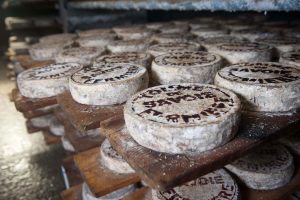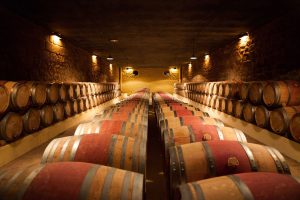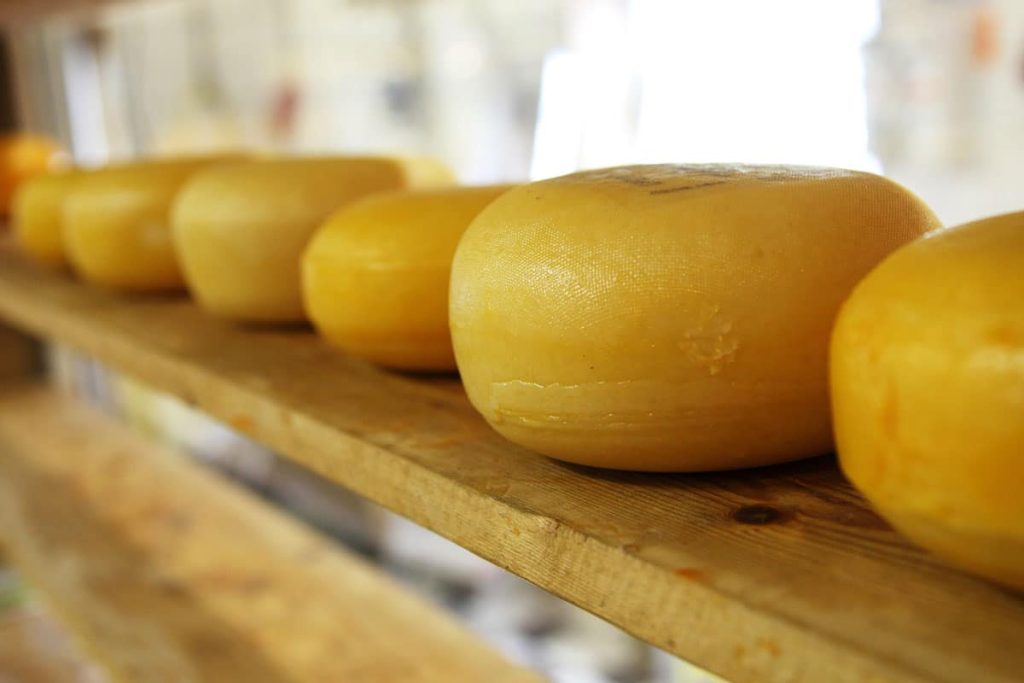Whether the humidifier is used to grow mushrooms, age cheese, prevent wine or whiskey from evaporating from wood barrels or adding humidity for the proofing stage in commercial baking, application and control of humidity is important in producing a quality food product.
Humidifiers For Food Production
Humidification plays a large role in food production where humidity is used throughout the food and beverage industries for purposes as diverse as proper drying of inks or coatings for packaging and even the product itself. Humidity can more closely affect the product in environments such as those used for cheese aging and bread proofing. Typical cheese aging caves are kept at as much as 75% relative humidity depending on whether the cheese has a soft or hard rind. In bread making, the stage known as proofing utilizes humidity for the development of the yeast in the bread dough. It’s important at this stage to provide a consistent level of humidity in a warm room environment so that the yeast develops to raise the dough and provide levening to get the right end product.

Humidifier In Commercial Bakeries
Bread making is a multi-step process. Home bakers have their individual techniques for managing these steps and finding out what works for them. All bakers know, whether they are commercial or home, the ever-so-important proofing of the dough must be monitored. This crucial step, where yeast feeds on sugars releasing carbon dioxide, is what gives each type of bread its distinct character and texture. Additionally, many bakers will use moisture throughout the baking process to give a superior product with a nice flake and crispy crust.
Consistent Humidity: Quality Baking
For commercial bakers, the process is similar to a home baker but done on a much larger scale. In commercial baking, it’s more important to get a consistent, high-quality baked product again and again. Humidification helps with this process for bakeries. Typically, after ingredients are combined and kneaded, the bread goes into the first fermentation stage. At this stage, the yeast begins to digest the sugars and starches in the bread mixture creating lots of pockets of CO2 which gives the dough a ‘rise’. Adding humidity prevents the dough from forming a ‘crust’ which would prevent full rise of the dough and a lesser product. Typically the bread is then kneaded again to remove air pockets, left to rest and then put into the baking container to once again rise. The fermentation that causes the dough to rise works best in a humid environment to keep the dough pliable and the yeasts active.
Humidity: Bakery Retarder Cold Store
Humidification can be used in multiple ways including use in a commercial bakery cold store retarding room. A retarder is a refrigerated room where dough is placed to control the proofing process. The cold temperature slows the rise by reducing yeast activity while the dough continues developing a deep flavor. Retarding dough controls the proofing stage allowing distribution of ‘unbaked’ dough for retail, grocery chains and other outlets to ‘finish’ the baking process and serve local customers a fresh-baked product. The retarding process also gives the bread a darker crust once baked. Due to low temperatures needed in the retarder, humidity levels are quite low. Our system replaces the humidity in the room that is removed by refrigeration. Adding consistent humidity keeps the dough’s surface from drying out. keeping it fresh to ensure less product loss.
In the baking process, moisture or humidity in the hot oven can help create baked goods that are kept moist on the outside while cooking on the inside resulting in a final product that is not dried out yet offers a crisp & crusty outside texture.

Mushrooms Grow With Moisture
Mushroom growing involves recreating certain ambient conditions similar to where mushrooms are grown, often in low light, cool with higher humidity. Typically, commercial mushrooms are grown indoors in vertical growing environments and consistent humidity contributes to the stages of mushroom growth. Evaporative humidity keeps substrate moist. This gives the spores a chance to root and fruit. As is the case with most organic processes that utilize humidity, the correct environment envelopes the matter, in this case substrate and mushrooms spores and fruit, without over-wetting.

Using Humidifiers In Cheese Aging
Aging cheese also involves specific temperature and humidity levels. The culture in the cheese, essentially the bacteria, ‘grows’ when it is able to benefit from higher humidity and moderate temperature. Humidity prevents the cheese from drying out too quickly in the aging process. That process can take 6 months, a year or two years. Only then can the culture do its work to create a unique flavor profile of each cheese.

Wine & Whiskey Barrel Aging
For wine and whiskey, its the wood barrels that must not be allowed to dry out. Humidifying the storage rooms for these barrels is advantageous to the entire process of wine or whiskey making. Not only will the barrel be kept from drying and cracking, but consistent, higher humidity levels keep evaporation, or angel’s share, to a minimum. Wood’s hygroscopic nature allows it to absorb moisture in the air keeping it expansive throughout the aging process. It’s not unusual for wines to be aged in oak barrels anywhere from 6-9 months. Whiskeys typically are aged much longer and over the course of years, the humidity plays an even greater role.
Climate Control: Food Humidifiers
Control of the environmental conditions created for food production is important. Adding humidity is no different. Not only must the conditions be held constant, but it’s important to create consistency across the space where these food products ‘grow’ and are stored.
MicroCool’s humidifier systems have been utilized for all of these applications. We customize a solution based on the needs of the purveyor but one that also fits the need of the space based on dynamic conditions such as temperature, air exchange, work within the space and any machinery. The fine control needed especially in a closed or indoor space is especially tricky with most humidifiers. That is why we developed a solution that is completely unique in the world of industrial and commercial humidifiers. Our FOCUS system utilizes small nozzle humidifiers that only release what is needed to keep humidity at the level necessary but without wetting surfaces. This solution was in part developed for low headroom spaces and can even be used for spaces with ceiling height as low as 8 Feet/2.44 Meters.
Do you need a custom designed humidifier system for your food production facility?
Contact us for a free quote.
phone. 1-800-322-4364 or 1-760-322-1111 | email. fog@microcool.com

